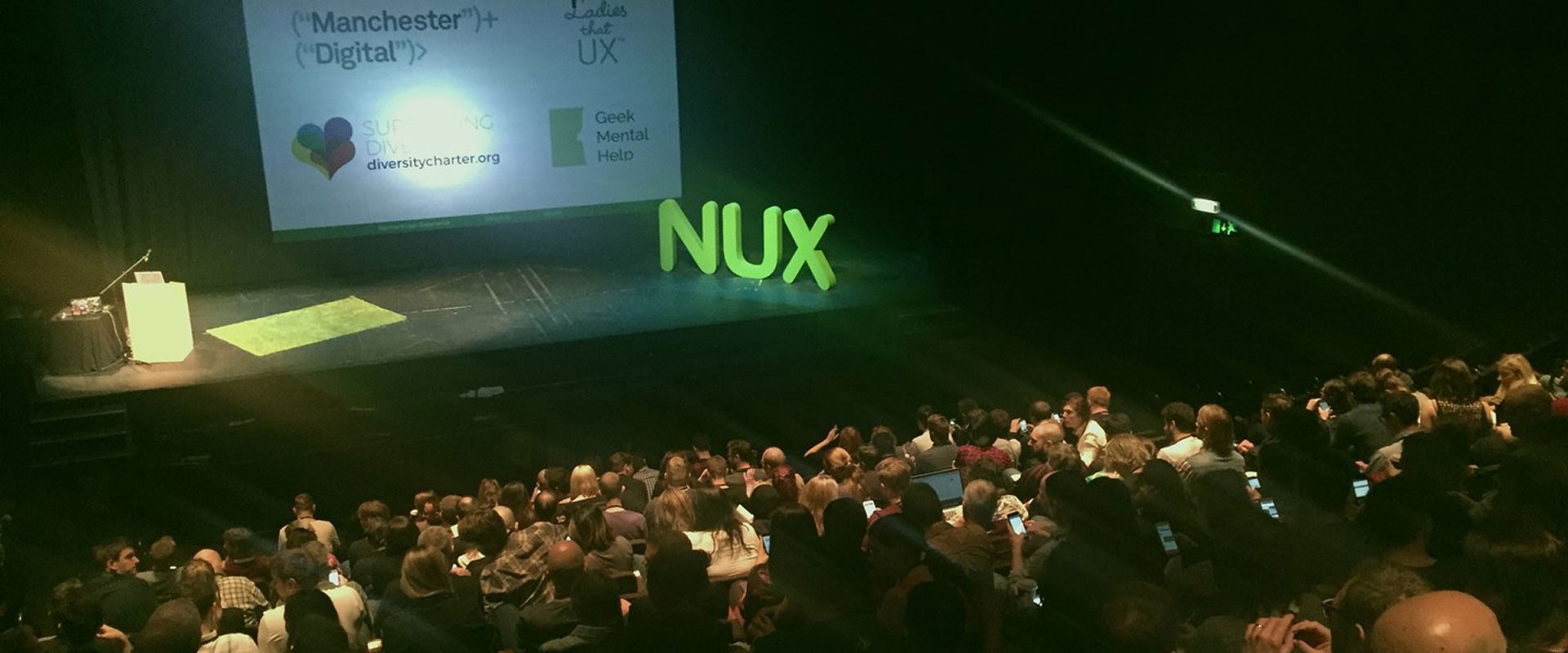This year’s UX and design conference, NUX5, took place in the Theatre Room of the Royal Northern College of Music and was opened by Boon Sheridan – whose job description ranges from site producer to voice actor. His opening keynote described how the world is full of ‘rules of thumb and checklists’, but it’s our job, as designers and developers, to challenge these ideas and not necessarily follow accepted best principles, which may have been written years ago, when something else might work better. “We are drowning in opinions with no context” he quoted when talking about how decisions are not always made by the people who know best, in fact the people with the right knowledge are often not involved in the decision making process at all. He finished by saying that we need to move to a point where everyone is involved in the design process at some level.
Lola Oye discussed the topic of ‘Wicked Problems and how they translate to the world of User Experience’. A ‘Wicked Problem’ is one with no solution, or a solution that causes another problem or many problems which will often also be wicked. She stated that these came into the UX world with things such as the Agile process. Although Agile fixes a lot of problems, it can also create them, some of which cannot be easily fixed due to the time constraints within an Agile ‘sprint’. She also repeated Boon’s sentiment that “often decisions are made by the least knowledgeable forums”.
The first speaker after the refreshment break was Karina Van Schaardenburg whose talk was on the importance of research using a case study of her own to illustrate her point. Having lived in eight different countries, Katrina loves to meet new people and learn their social behaviours. She stated the importance of using multiple methods of research so that you can build a wide knowledge of what is happening with a product. She talked about an experience in Turkey and how, while planning the excursion to conduct her research, she used a questionnaire as it was not time consuming and it gave her a good idea of what needed to be asked when there. When she got to Turkey she ran Lab Interviews in which the users came to her to give a simple evaluation and then field interviews in which she went to see users gaining knowledge from them.
The next speaker, Glenn A. Gustitus, gave a speech about the pursuit of making designers and security work more closely together so that one of the most important aspects of functionality is not just tacked onto a project halfway through or at the end. He stated that “we make a series of design decisions that make assumptions about risk” and that “authentication does not equal authorisation.” For example, you may have an account to log on to a site, but that does not authorise you to change the site or view all areas.
Following lunch, Sophie Dennis presented a talk about ‘The Art of things not done’ in which she discussed whether having something done badly is better than having nothing done at all. “People remember the best bits, the worst bits and the end” she said, so you should try to amplify your best bits to make them even better next time, eliminate the worst bits to make sure you are on a good note throughout and end well so that you don’t lose your audience.
We then had a conversation with Graham Odds, or at least he had a conversation with the pre-planned messages on his slides. “Let’s have a conversation” was about taking the useful features of apps that are not needed and taking them in to messaging services for ease of use. He said that ‘chatbots’ (although he dislikes the name as they cannot chat as they are “dumb” and need responses to be programmed) are the future of messaging services. He said we will see a shift to Natural User Interfaces using the spoken word in a move away from Graphical User Interfaces.
The Final speaker of the night was Henny Swan with her closing keynote “The Velvet Rope”. She talked about how websites need to become more friendly towards people with disabilities. She explained that just meeting the points in the Web Content Accessibility Guidelines (WCAG) is not enough as it may mean people with disabilities can’t use the site easily. She gave an example of a man who needed to use a screen-reader for a BBC site, despite it following all the guidelines in WCAG, he found it difficult to navigate as many items on the page where wrongly labelled as a header meaning that more than a hundred items had to be read out one by one.

